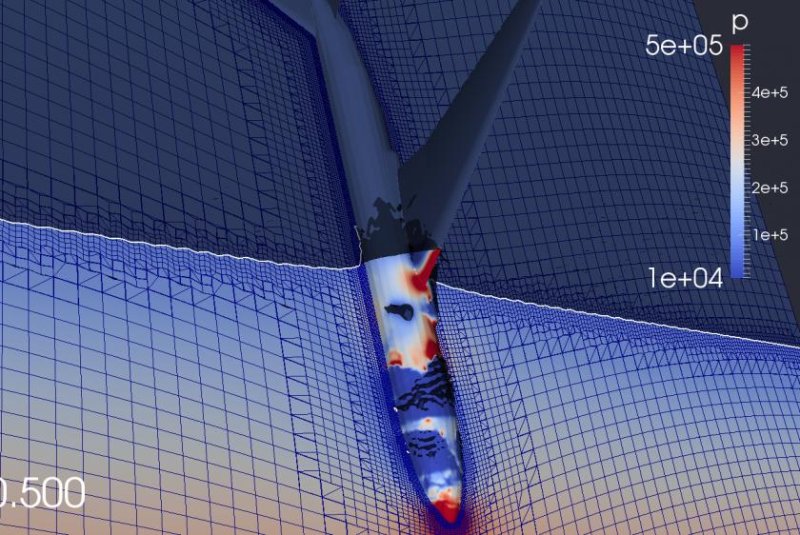1 of 3 | Texas A&M Professor Goong Chen and a team of researchers determined a nose-dive water entry could explain why Flight MH370 left no debris behind when it disappeared. Photo courtesy of the American Mathematical Society
DOHA, Qatar, June 10 (UPI) -- Professor Goong Chen from Texas A&M University in Qatar has published a study positing that vertical entry into the ocean explains how Malaysia Airlines Flight 370 disappeared without a trace.
The university reported Chen's findings on Sunday.
His study, "Malaysia Airlines Flight MH370: Water Entry of an Airliner", was published in the April issue of the Notices of the American Mathematical Society journal. Following five simulations of an airplane's entry into a body of water, Chen and his team concluded that MH370 nose-dived into the ocean with a steep pitch angle, which explains why no floating debris has been spotted.
Research of this kind has been conducted before, and is dubbed the "water entry" problem in applied mathematics and aerospace engineering. In this undertaking, Chen worked with an interdisciplinary team of collaborators from Texas A&M, Pennsylvania State University, Virginia Tech, MIT and the Qatar Environment and Energy Research Institute (QEERI).
Chen notes that his work is "of a speculative character" and that finding MH370's black box is the only way to truly determine the flight's final moments.
A nose-dive entry is the only type of entry that does not stress the fuselage of an aircraft and potentially induce its rupture. The fluid dynamic simulations carried out in the study indicate that the absence of a large bending moment makes the aircraft less likely to experience break on entry near the ocean surface.
Chen explains that water landings are referred to as "ditchings" when they do not necessarily cause deaths, as demonstrated by the successful ditching of US Airways Flight 1549 in the Hudson River following a loss of power.
MH370 left Kuala Lumpur for Beijing on March 8, 2014. In a timeline of the accident published by The Guardian, the Boeing 777 lifted off at 12:41 a.m. carrying 227 passengers and 12 crew. It went missing from military radar at 2:14 a.m. as it headed west along the Strait of Malacca. Half an hour later, Malaysia Airlines reported losing contact with the plane.
The search effort began March 10 when Vietnamese aircraft searched for a plane door that was reportedly spotted in the area but found nothing. Since then, the search has become a multinational effort involving underwater exploration. As of late May, Australia and Malaysia have split the cost of $60 million in the effort.
On Wednesday, the Australian Transport Safety Bureau issued an update addressing the damage caused by rough weather to its GO Phoenix search vessel. The vessel is in Australia for resupply and will conduct repairs during its return to the search area.















